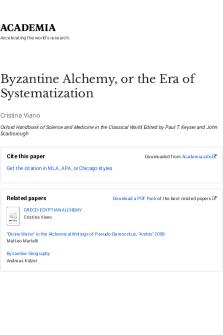Political Caricatures of the American Era PDF

| Title | Political Caricatures of the American Era |
|---|---|
| Author | Franz Robert P. Alolod |
| Course | Readings in Philippine History |
| Institution | University of St. La Salle |
| Pages | 1 |
| File Size | 77.8 KB |
| File Type | |
| Total Downloads | 319 |
| Total Views | 586 |
Summary
Name: ALOLOD, Franz Robert P. Course, Year, and Section: BABA 1C Subject: Readings in Philippine History Date: September 29, 2020POLITICAL CARICATURES OF THE AMERICAN ERAPhilippine Cartoons: Political Caricatures of the American Era is a book authored by Alfred William McCoy, an American professor o...
Description
Name: ALOLOD, Franz Robert P. Subject: Readings in Philippine History
Course, Year, and Section: BABA 1C Date: September 29, 2020
POLITICAL CARICATURES OF THE AMERICAN ERA Philippine Cartoons: Political Caricatures of the American Era is a book authored by Alfred William McCoy, an American professor of history and award-winning writer who dedicated his professional career on the research of Southeast Asian history, especially that of the Philippines, as well as the study of US Foreign Policy. One of his dissertations tackled the factional conflict in the colonial economy of Iloilo, Philippines from 1937 to 1955. His interest in Filipino history allowed him to master the Hiligaynon dialect and understand the political situation, not just of the region of Iloilo, but of the entire country. Philippine Cartoons is a compilation of 377 editorial cartoons and caricatures made by various Filipino artists that tackle the situation during the American occupation in the Philippines. Dated from 1900 to 1941, each individual caricature recorded national attitudes toward the coming of the Americans as well as the changing mores and times. Some of the cartoons presented the condition of Filipino farmers on the hands of American tenants who self-owned the lands of the laborers and imposed unbearable and unjust taxes on them. The cartoons also compared the job situation of a Filipino and an American by portraying unequal salaries despite having the same nature of work, which highlighted racial discrimination in terms of work condition, wages, job opportunities, and career positions. Aside from that, the caricatures also depicted Americans as controlling and enslaving people by taking over the insular civil service and making Filipinos do most of the work for their own benefit, paying off authorities for their personal security, and demanding highest respects from the Filipinos. From here, growing corruption was shown to be taking over the political processes in the Philippines. Moreover, they exemplified American imperialism as the primary reason for the war between Muslim and Christian Filipinos in Mindanao and for other feuds among Filipino people who should have been supporting one another in fighting Americans to regain their independence. McCoy was able to provide a comprehensive background for each caricature to give readers details of the turbulent period the Filipinos have experienced under the hands of the Americans. With the help Alfredo Roces, who designed the book and contributed an essay on Philippine graphic satire during the American era, Alfred McCoy was able to publish Philippine Cartoons as a secondary source of different political caricatures drawn during the said period. These caricatures clarify historical information and serve as eye-openers to the realities experienced by the people under the American occupation. The book reflected antiAmerican sentiments in addition to the condemnation of the ruling class which give us a glimpse of the Philippine society of the past, visualize its historical politics, and appreciate the representations of perceptions of the Filipinos of that era. Later, political cartoons like these would become relevant in presenting the current situation of the country, just like how they served as primers for engaging the people in the prevailing opinions at that time. Studying the caricatures of the American period made me see the relevance of discussing political and social issues to the understanding of the national situation. It also moved me to understand the views and opinions of others which may differ from what I believe in to create a peaceful discourse which could lead to the development of social relationships and the betterment of the country....
Similar Free PDFs

Chapter 7 American ERA
- 3 Pages

The Theory of Political Culture
- 278 Pages

Politics of the Jacksonian Era
- 7 Pages

The Political Economy of Crisis
- 5 Pages
Popular Institutions
- Tinajero National High School - Annex
- Politeknik Caltex Riau
- Yokohama City University
- SGT University
- University of Al-Qadisiyah
- Divine Word College of Vigan
- Techniek College Rotterdam
- Universidade de Santiago
- Universiti Teknologi MARA Cawangan Johor Kampus Pasir Gudang
- Poltekkes Kemenkes Yogyakarta
- Baguio City National High School
- Colegio san marcos
- preparatoria uno
- Centro de Bachillerato Tecnológico Industrial y de Servicios No. 107
- Dalian Maritime University
- Quang Trung Secondary School
- Colegio Tecnológico en Informática
- Corporación Regional de Educación Superior
- Grupo CEDVA
- Dar Al Uloom University
- Centro de Estudios Preuniversitarios de la Universidad Nacional de Ingeniería
- 上智大学
- Aakash International School, Nuna Majara
- San Felipe Neri Catholic School
- Kang Chiao International School - New Taipei City
- Misamis Occidental National High School
- Institución Educativa Escuela Normal Juan Ladrilleros
- Kolehiyo ng Pantukan
- Batanes State College
- Instituto Continental
- Sekolah Menengah Kejuruan Kesehatan Kaltara (Tarakan)
- Colegio de La Inmaculada Concepcion - Cebu











